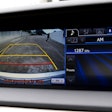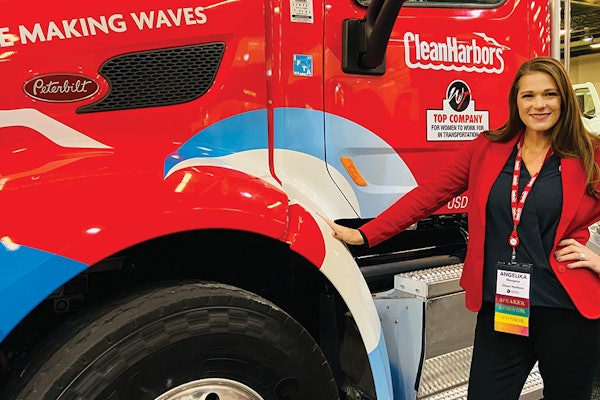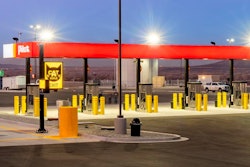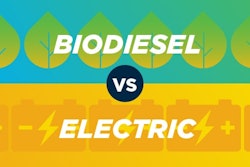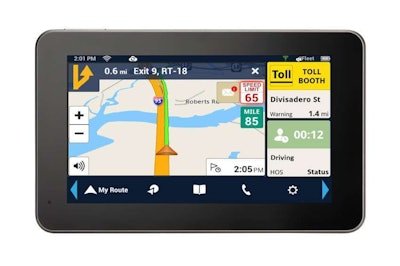
The company has developed an Android GPS truck navigation device that includes electronic driver logs, the Magellan RoadMate RC9496T-LMB. The device connects to a desktop tool, the Magellan Fleet Manager. The new fleet offerings will be available in fourth quarter 2014.
The Magellan RoadMate is a 7″ tablet with a serial port, dash mount, and black-box cable. The supplemental Magellan Fleet Manager enables central office management of software on the device as well as map updates, route planning, visibility to driver logbook status, and cloud content that includes real-time fuel pricing and weather information.
Magellan has made its Fleet Manager software to be compatible with Fleet-ready Android devices.
Some of the navigation features in the Magellan Fleet Manager include the ability to customize truck routes based on vehicle profiles for height, weight, width, length, and hazmat restrictions. The software lets drivers plan trips with multiple stops in the order they want or has the option to automatically optimize for the most efficient route.
Traffic alerts can be sent directly to the GPS unit, at no cost, to let drivers plan more precise travel times and ETAs by avoiding traffic jams and other delays. A feature called Junction View displays a realistic image of the road and highway signs to help guide drivers to the correct lane that the vehicle needs to be in for safe merging and exiting.
Landmark Guidance gives users an easier way to navigate to their destinations by telling them to turn at familiar landmarks, such as gas stations, stores or other large, easily-seen places instead of only street names that may be hard to locate and/or read.
The Magellan Android Fleet application supports protocols that include: 1) reporting hours of service (HOS) and state mileage for IFTA fuel logging, 2) text messaging between the driver and office, 3) receiving and displaying new stops sent from the office, and 4) calculating estimated time of arrival (ETA).




